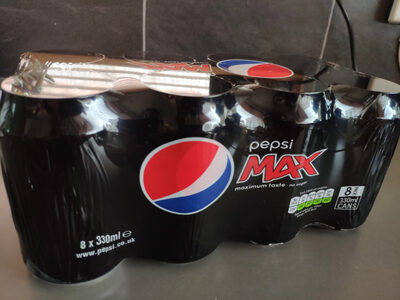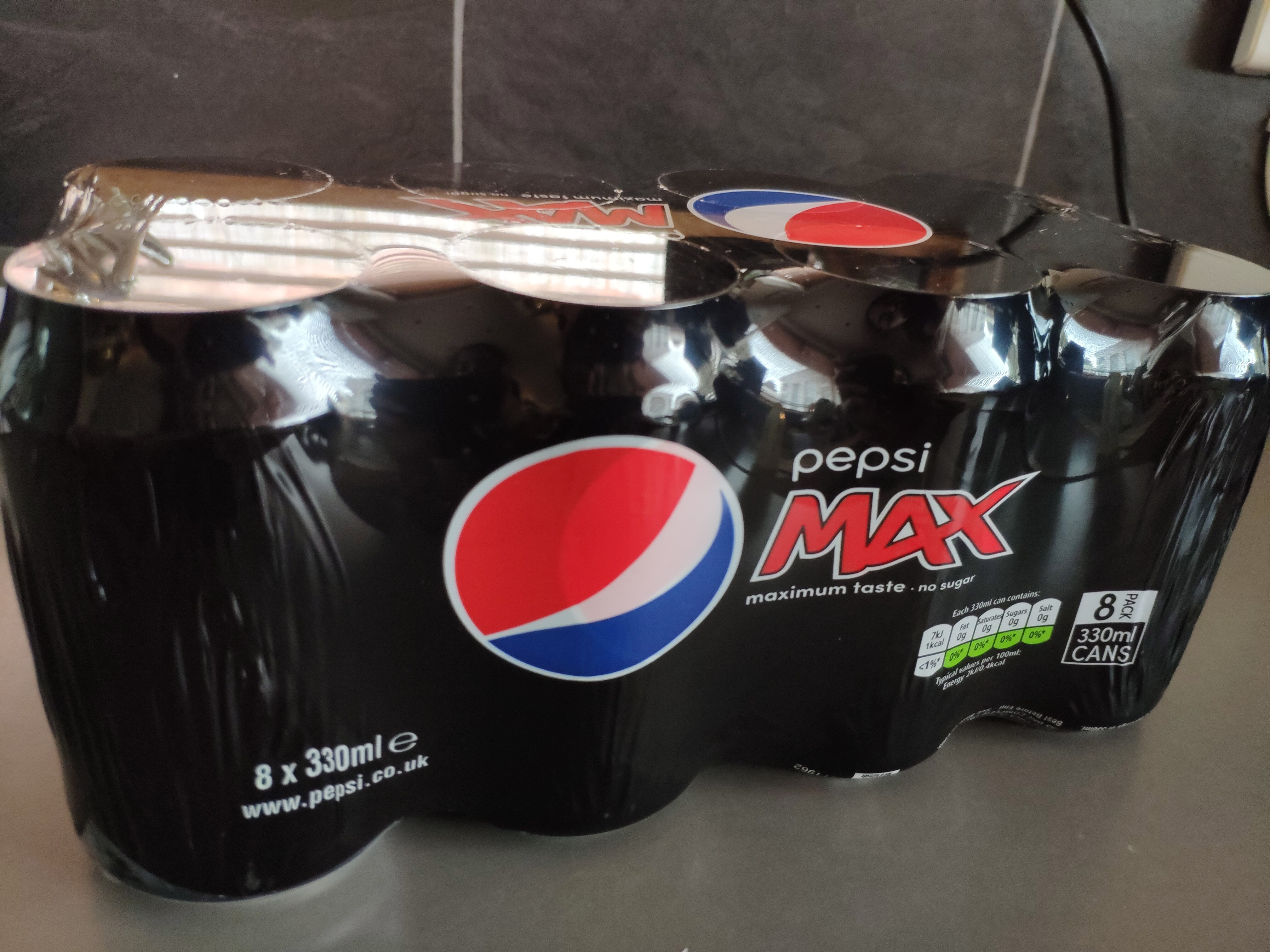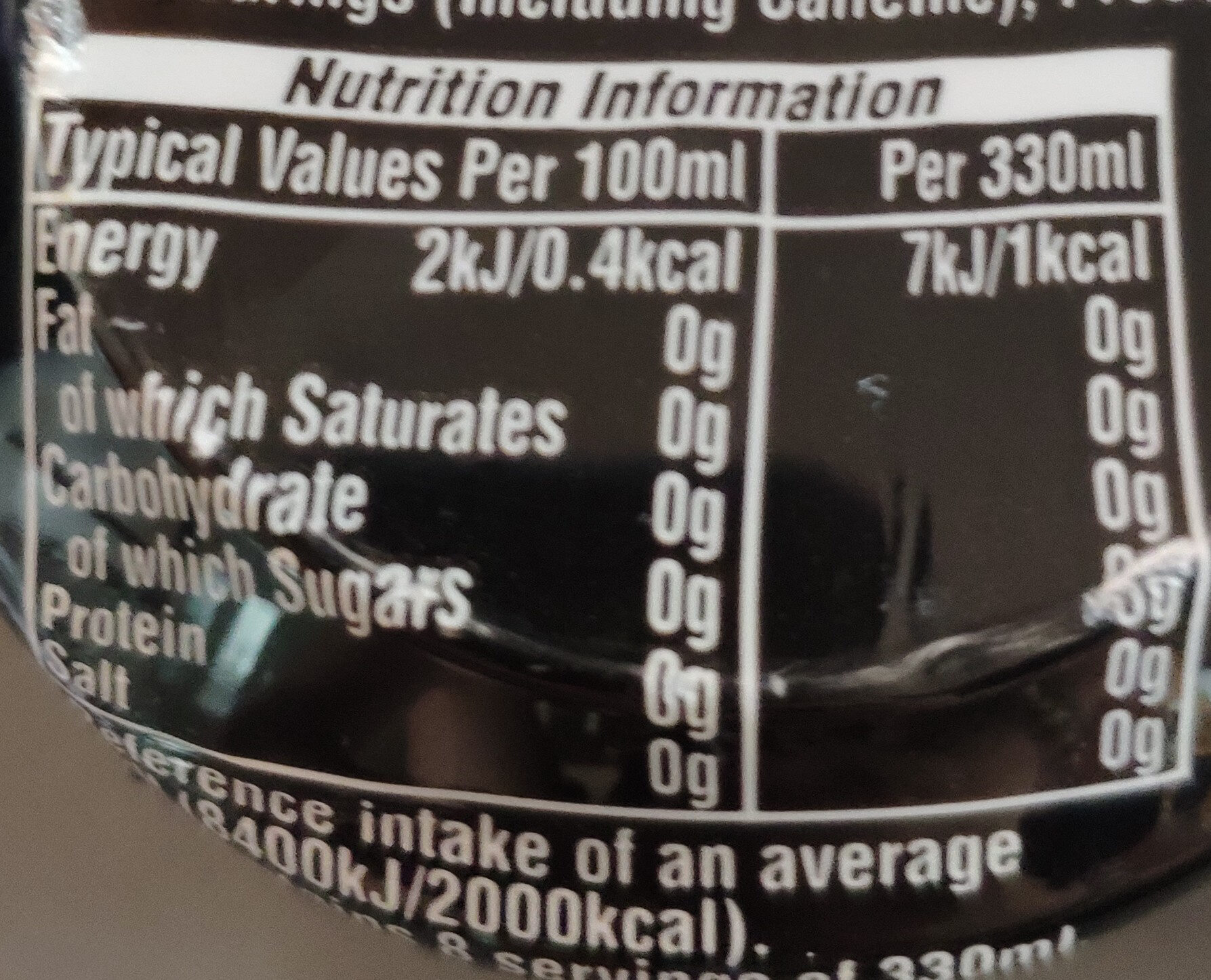Pepsi Max Multipack - Pepsi-Cola - 2640ml
This product page is not complete. You can help to complete it by editing it and adding more data from the photos we have, or by taking more photos using the app for Android or iPhone/iPad. Thank you!
×
Barcode: 4060800134592 (EAN / EAN-13)
Common name: Low calorie cola flavoured soft drink with sweeteners
Quantity: 2640ml
Packaging: Metal, Plastic, Recyclable Metals, Aluminium, Can
Brands: Pepsi-Cola, Pepsico, Pepsi
Categories: Beverages, Carbonated drinks, Artificially sweetened beverages, Sodas, Diet beverages, Colas, Diet sodas, Cola-without-sugar-with-artificial-sweeteners-and-with-caffeine
Labels, certifications, awards: Contains a source of phenylalanine, Made-in-gb
Manufacturing or processing places: USA
Link to the product page on the official site of the producer: https://pepsi.co.uk/products/pepsi-max
Stores: Asda
Countries where sold: United Kingdom
Matching with your preferences
Environment
Packaging
Transportation
Report a problem
Data sources
Product added on by openfoodfacts-contributors
Last edit of product page on by packbot.
Product page also edited by alia, inf, roboto-app.









